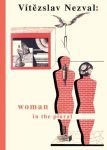 Artificial Whiteness: Politics and Ideology in Artificial Intelligence
Artificial Whiteness: Politics and Ideology in Artificial Intelligence
Yarden Katz
Columbia University Press
Each branch of United States government has a long history of reflecting, reinforcing, and perpetuating white supremacist norms. Innovations in technology continue to abet punitive, carceral outcomes, via, for instance, facial recognition systems programmed to interpret data points related to such features as skin tone in terms of “likelihood,” which is programmed into the software by programmers making assumptions (“The likelihood of what?” one might ask), most of which the programmers never examine.
In Artificial Whiteness: Politics and Ideology in Artificial Intelligence, author Yarden Katz’s examples of racism form merely one of several ominous strands in the historical makeup and development of things called “AI.” So, the title is a bit off on stating the book’s actual focus, which is how ethnic (sub)groups with governmental power monopolies use things called “AI” to reinforce the status quo. This problem is as old as the formation of clans and tribes: keep at bay my enemies (real and imagined) and increase my power and riches.
Although Katz uses “whiteness” as the locus of particular evils, the evidence he presents shows that problems in AI created by social biases (inadvertently and purposely written into computer applications) are the social norms of the dominant ethnic group of the dominant force in power. For instance, some Chinese AI firms claim to sell facial recognition systems specifically design to identify Uighurs—who are then presumably rounded up by the police or military and sent away to be “re-educated.” (The majority of Chinese, who also have most of the nation’s money and power, are Han and Buddhist rather than Uighur and Islamic.)
Ethical problems related to autonomous vehicles also illustrate the limitations to software programs that cannot avoid embedding predominate cultural norms. Attitudes toward jaywalking, for instance, seem to vary around the world. Something the Singaporeans and Norwegians might agree on, for instance, is that jaywalkers get what they deserve: Walk where the law has determined you should not and pay the price. The same attitude would not work in the U.S. Will separate programs be written for vehicles based on the country in which they’re sold? Or will a uniform, international “norm” be imposed upon unappreciative peoples?
Katz argues that the current resurgence in AI funding from governments (and their military branches) and corporations owes to the added adjective “ethical,” which spreads a thin patina of university credibility overs the research, thus broadening the base of buy-in from knowledge workers. No surprise, significant amounts of funding come from corporations who routinely engage in acts of civil and ecological shenanigans. But that funding for AI programs comes from racist, ecological evildoers does not mean that the persons writing code for different overt purposes are of similar moral disfigurement. (There are programmers who would be thrilled to think that their skills were used to help the environment.)
Artificial Whiteness is predicated on two concepts, each possessing, as Katz notes, critically unstable meanings: intelligence and race, terms that have historically always lacked agreed-upon definitions. Katz shows that definitions of “white” are as elusive as those for “Black,” and yet his title misses the broader point that any culture funded and ruled by one ethnic group will tend to project its assumptions about others onto its notions of normality, which are also assumed universal. Katz notes that in every iteration of AI over the past 80 years, “we find the practice of situating AI within capitalist and imperialist agendas”: that clause represents the full scope of his project. No dominant entho-political bloc wants to be economically and culturally beholden to a foreign overlord or the whims of the enemy(ies) within.
In addition to questionable practices in the U.S. that produce adverse economic and legal outcomes for Blacks are the practices implied by the nascent AI wars among the most powerful nations. These wars are battles both for intellectual-property primacy (and thus national and international economic prowess) and political dominance (national and international), often fought out in the world marketplace. The U.S. government’s argument with the Chinese tech firm Huawei (which manufactures and sells a wide range of consumer electronics and telecommunications products around the world) is that Huawei was collecting demographic data from U.S. and European users on behalf of the Chinese government. Few in the U.S. complain, however, when Microsoft, Facebook, and Google do the same for our government.
The ability to rid programs of biases and assumptions has not yet been realized. The sciences routinely operate with incomplete information, acting “as if” their models are complete, adjusting their models until predictions and outcomes match, or until the problem is better defined. (For a philosophically technical argument on the role of “as if” assumptions in and out of the sciences, see Kwame Appiah’s slim book, As If.) Prominent AI critics, such as Hubert Dreyfuss, have not had much more success in tackling the problem than have AI advocates (who tend to see biases in programming as mere technical matters to overcome).
That “intelligence” is as definable as “pornography,” means that AI advocates will continue chasing not a moving target but a darting chimera. In the meantime, the conditions needed for improving the quality of life of consumers, citizens, and nations will largely go ignored.
 X-Risk: How Humanity Discovered Its Own Extinction
X-Risk: How Humanity Discovered Its Own Extinction
Thomas Moynihan
Urbanomic
A fascinating, wide-ranging intellectual history of an idea whose consequences we’re just beginning to grapple with, X-Risk traces the history of how humanity became self-conscious of its ability to bring the planet’s biota to the point of the extinction, a history beginning with the sense of humanity’s own ending via apocalypse or extinction.
While apocalypse is spiritual, moral, and God-determined; extinction is material, amoral, and human-determined. In apocalypse only the evil suffer; in extinction, everybody suffers. The apocalyptic asserts an entire cosmos structured according to moral principles and truths, populated by Earth-like creatures, including and especially humanoids. Extinction asserts through evidence that as conscious, technologically savvy beings, we are alone in the universe, have only one chance on Earth, and are likely to die out sooner or later, no matter what we do.
As material evidence about the Earth’s lands and seas accumulated over the course of 150 years or so, the religious assumption that human-like life populated the Earth’s oceans and core (and by extension the entire universe) was replaced by the fact that it’s mostly inorganic matter all the way down. As measured in sentient life, God’s abundance and goodness were shown to be in short supply.
Furthermore, once the ability to age rocks arose and knowledge acquired of the materials and forces required of their formation, geologists could then demonstrate the existence of a vast, “deep time” in the past—but a past with a moment of origin rather than one that has eternally existed, as had been believed.
Discontinuities among fossils with contemporary fauna also demonstrated that extinction of entire species had occurred in the past and will likely occur in the future. Reports coming from the New World during the 18th– and 19th-centuries indicated that humans were also currently hunting to extinction native birds and mammals.
Theological assumptions of eternal cycles of death and renewal, of eternal plentitude everywhere, had been cut at both ends, past and future. Replacing a sense of eternal plentitude was the realization that everything is on a one-way trip to oblivion.
Once the fact of a changing but a-cyclical material history was established among sciences from biology to geology, the discovery in mathematics of calculus and the establishment of probability theory allowed the prediction of future events. At one point in human development, deviations from daily norms were interpreted as unpredictable acts of God (or the Devil). But now, physical forces of change—past and future, planetary and cosmic—could be determined and the mechanisms behind deviations explained and predicted.
Debates within the sciences, and the physical records they were based upon, were mediated by various philosophers, British Romantic poets, and prescient French novelists, who also all began predicting what the future holds in store for humanity (something unhappy) and why and how (or if) that direction should be changed.
But notions of “better future” indicate that, if minimizing human misery is the goal of technology and ideological systems, then not being born would be in the best interests of all people. Once the likelihood of humanity’s extinction was established and the misery of human existence universally acknowledged, proposals for omnicide began popping up in philosophy and the sciences. Some omniciders argue for accelerating the natural course of human extinction, rationalized as doing the universe a favor, arguments earnestly presented by anti-natalists as an overall moral good. Moynihan is not one of their supporters.
Nor does he endorse a future in which humans evolve toward some form of drug-induced pleasure-stupor, coddled by technology designed to perpetuate our existence.
Insofar as we have any Lamarckian abilities to steer the course of our otherwise Darwinian (aka aimless) evolution, Moynihan argues that we should aim to live above mere the mere survival level that happy droolers inhabit and equip ourselves with a life vocation: Once the bare minimum to survive has been satisfied, our remaining physical and mental efforts should be used toward achieving perfection in some skill.
Or if achieving, say, Olympic-contender greatness isn’t among the skills a person wants to develop, they can work instead to use technology to devise ways to help humans live with and correct the world-wide ecological disaster currently unfolding. Unlike other species, Moynihan argues, we have the ability and should do what we can to sustain and perpetuate ourselves, and as much other life as we can, too.
While I would counter that every well-engineered solution is also a well-engineered problem, correcting our path as we go along may be our only chance for longer survival, even if every solution proves temporary, creating new problems in its wake.
 Work without the Worker: Labour in the Age of Platform Capitalism
Work without the Worker: Labour in the Age of Platform Capitalism
Phil Jones
Verso
Deep though it may already be, the well of corporate avarice and duplicity seems to be refreshed daily. New to my attention are bits of labor described as “microtasks,” jobs performed on computers that take anywhere from a minute to a few hours to complete. The labor is outsourced by the usual tech suspects, Facebook and Google among them, to platforms serving as job hubs, which consist of tasks aimed to improve computer algorithms. (An algorithm is merely a way of processing data. To make predictions, the algorithm needs a data bank of previous examples to work from.)
In one sense, then, the workers are training algorithms to take over their jobs. That seems to be the most benign use of their labor. In other cases, in which a worker might have to identify parts of a photograph (much like a CAPTCHA image), the purpose of the task could be to simply improve the performance of an autonomous vehicle (“building,” “road,” “sidewalk”) or to identify for a drone which parts of, say, an Arab village, can be bombed by somebody’s military—a military that anonymously farmed out a job to a city where micro-taskers live, who identify local landmarks without ever knowing why or for whom or for what reason.
Pay ranges from pennies on the hour to under $2/hour, depending on geography—refugee camp, prison, economic disaster area, Northern or Southern Hemisphere?—and supported by the practical cynicism of the World Bank’s “better a job than a hand-out.” In such a trap, workers exist much as Schrödinger’s cat—simultaneously employed and unemployed, the terminal state determined only the moment the question is asked: “Do you have a job?” (“For the next 60 seconds, yes.”)
The tasks pay sub-living wages and offer no benefits. Employment lasts as long as the individual task. Workers don’t know who they are working for at any given moment, who their co-workers are, or how to organize for better pay and better conditions. Today may offer 60 seconds of work from one company, tomorrow nothing at all, and the day after that, multiple jobs from multiple firms over 12 hours for a $5 gift card from Amazon rather than money.
Platforms, the third-party websites that host these jobs, take a 20% cut from the workers’ wages, then sell data about how the workers performed their tasks back to the companies who farmed out the work, including keystrokes, eye movements, break lengths, and so forth. (In addition to the 20% cut from laborers’ efforts, about 15%-20% of tasks are never paid for by employers.)
The microtaskers both improve existing algorithms and sometimes serve as the algorithm itself for, say, start-up companies trying to demonstrate the potential of their product. Without telling investors, data entered is actually analyzed by microtaskers elsewhere, not the software system itself. A type of fraud, if you will, but look at the audience.
Jones does not foresee currently viable solutions to the problem, but he does note that the tendency among companies to atomize tasks into discrete components performable by trained computers could easily seep into such white-collar jobs as accounting and other rote occupations that can be both mimicked and a set of probabilities developed for.
What happens to the displaced workers whose jobs have been subsumed by computers?
That’s what for-profit prisons were invented for.
 The Provensen Book of Fairy Tales
The Provensen Book of Fairy Tales
Alice and Martin Provensen, illustrators
NYRB Children’s Collection
Alice and Martin Provensen began their careers as animators for Walter Lantz Studio during WWII before beginning a series of collaborations in which they illustrated existing stories. This collection brings together retellings of anonymous folk tales by such writers as Hans Christian Andersen, Oscar Wilde, A. A. Milne and others. The stories are briskly paced (but not necessarily short for young readers) with surprise twists, and the illustrations require the stories be read to be understood. Grandparents may recognize stylistic similarities between these illustrations and some of the animated cartoons they may have watched growing up.
The stories depict an enchanted world that rewards industrious labor, practical skills, and unwavering honesty. An overarching moral might be added: Avoid prejudging strangers based on only their appearance. But because the original version of this book was published in the early 1970s—spoiler alert!—its young women, while not passive, might be read today merely as agents of their own oppression, even though the better male characters, too, consistently put the needs of others above themselves and feel pretty good about it as a result.
 Pyambu / Dream Pattering Soles
Pyambu / Dream Pattering Soles
Miguelángel Meza (Elisa Taber, trans.)
Ugly Duckling Presse
Miguelángel Meza is a poet from Paraguay who writes in the indigenous Guarani language. Jopara, a creole language of Paraguay, mixes Spanish and Guarani, and an earlier Spanish translation of Pyambu is included here as the mediating language between Guarani and English. The Guarani language is infused with the mythology of its people and, by extension, Paraguayans in general. Thus, Meza joins mythic origins to contemporary life in a series of poems that lead to environmental destruction. Here are the first two stanzas of “Void” (“Nandipa”):
Dry stream.
All the dry streams.
They intertwined, gushed, overflowed, cascaded.
Then, disappeared.
Small fish extinguished.
Small fish with gold scales,
bred by bodies of water that dried,
extinguished.
Man leans back to sleep.
His head smolders.
Elisa Taber’s excellent translation includes extensive background notes on the poetry and of Meza and the mythology of the Guarani people and language.
 Vice-royal-ties
Vice-royal-ties
Julia Wong Kcomt (Jennifer Shyue, trans.)
Ugly Duckling Presse
Born into a Chinese Peruvian (tusán) family in a nation of multiple ethnicities vying for recognition (including Peru’s indigenous peoples, descendants of slaves and Spaniards), Wong Kcomt’s title for this collection of poems comes from the Spanish term for the South American lands colonized: viceroyalties. Breaking the word into component syllables manifests the inherent tensions among a people yoked together in a nation, for good or ill: “The world is a phenomenon unchaining / offensive bubbles.” This poem, “Six,” continues:
Now I see a lovely little boy, a man who looks like
a piece of
people’s bread.
And I see witches and incomprehensible dances,
flickers of
a rusted woman in Oceania.
In front of me, a man occupied by many voices.
But this is another nightmare: after the towers
fell, we women couldn’t love in all
languages, nor
choose the nationality of our lovers.
Here, the personal is the political, and no actions by the poems’ narrators can be imagined without recognizing the consequences of one’s behavior, or the consequences that lead to the moment when love was possible.
Jennifer Shyue renders Wong Kcomt’s poetry into seamless idiomatic English and provides a helpful afterward to further elucidate the poems.
 Woman in the Plural
Woman in the Plural
Vítezslav Nezval (Stephan Delbos & Tereza Novická, trans.)
Twisted Spoon Press
Originally published in 1936, Woman in the Plural is a collection of surrealist poems and prose by Vítezslav Nezval, a founding member of surrealism in Czechoslovakia, which perhaps is second only to France in its embrace and production of surrealist works in all media. Thus, Woman in the Plural, translated now for the first time in English, is a key contribution to the development of European surrealism.
Fans of surrealism enjoy its effects on readers’ imaginations by juxtaposing concrete words that don’t usually appear together, as in Nezval’s poem “Shopwindows”:
O women the shape of tobacco pipes
Slim robust the gently curving back
Women with the mechanism of the most delicate instruments
With the chattering tongue of a watch
With breasts of magnifying glasses
Poised like pince-nez
With eyes giving the opaque impression of moonstones with the tongue of a baby bottle. . .
Woman in the Plural collects a range of surrealist expression in writing: A play, poetry, automatic writing, and diary entries, many focused on a woman or women in general. The play “The Bird of Doom” is a nonstop, absurdist romp that amount a tour-de-farce exemplum of surrealism. But the poem “Merlin” deviates from the book’s overall devotion to surrealism by being fantasy-based (a musing on King Arthur’s magician, Merlin, who haunts the town squares of contemporary Europe), and much of “Between the Teeth of Days” sounds like a premonition of Alan Ginsberg’s verses (“I see a generation coming that will act on no timetable / But according to the color of the sky / Like I write my poems”).
Highly recommended for devotees of surrealism.



